When you hear “Nevada,” what’s the first image that pops into your mind? For many, it’s the dazzling lights of Las Vegas, the thrill of the casinos, and a vast, empty desert landscape. While the Silver State certainly lives up to its reputation for world-class entertainment and expansive arid beauty, asking what is Nevada famous for reveals a much richer, more diverse picture.
As a content creator passionate about connecting people with the world through travel, culture, history, and unique experiences, I can tell you Nevada is a treasure trove waiting to be explored, offering far more than meets the eye. Beyond the iconic Strip, Nevada boasts stunning natural wonders, a fascinating history shaped by boom-and-bust cycles, a surprisingly vibrant culinary scene, and unique cultural pockets that reflect its rugged frontier spirit. Let’s embark on a journey to discover the many layers of what makes Nevada truly famous.
The Obvious Answer: Las Vegas and the Entertainment Capital
Undeniably, a primary answer to what is Nevada famous for is Las Vegas. This city, often called the Entertainment Capital of the World, is a global magnet for tourism, renowned for its mega-resorts, elaborate casinos, spectacular shows, and vibrant nightlife. Millions flock here annually seeking excitement, luxury, and the chance to try their luck.
The Las Vegas Strip is a sensory overload, featuring themed hotels replicating global landmarks, high-end shopping, Michelin-starred restaurants, and residencies by world-famous performers. It’s a place built on spectacle and excess, embodying a unique American blend of fantasy and opportunity. Beyond gambling, visitors can enjoy Cirque du Soleil shows, magic acts, concerts, pool parties, and a dining scene that rivals major culinary cities worldwide. This concentration of entertainment and hospitality is a major pillar of Nevada’s fame.
What to Eat in Fort Worth – A Culinary Deep Dive
11 Must-Visit places to go in nevada for Your 2025 Trip
12 Unforgettable Fun Things to Do in Vegas for Couples
However, limiting Nevada’s fame to just Las Vegas misses a significant part of its identity. The state’s notoriety extends into other areas that offer vastly different, yet equally compelling, experiences.
A Landscape of Extremes: Natural Beauty and Biodiversity
While often pictured as endless flat desert, Nevada is actually the most mountainous state in the contiguous U.S., boasting over 300 named mountain ranges. This dramatic topography creates diverse ecosystems, a fact often overlooked when considering what is Nevada famous for. These ranges rise sharply from the basin floors, offering incredible opportunities for hiking, climbing, and exploring remote wilderness.
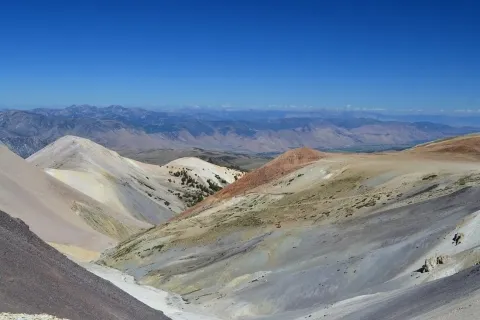 View looking down from the mountains. Dry desert mountains off in the distance.
View looking down from the mountains. Dry desert mountains off in the distance.
The state’s aridity is also a defining characteristic. Nevada is the driest state in the U.S., receiving a mere 10 inches of precipitation annually on average. This extreme dryness shapes the landscape, resulting in vast, open vistas of sagebrush, unique rock formations like those found in Valley of Fire State Park, and hardy desert flora adapted to survive in harsh conditions.
Despite the arid reputation, Nevada is home to surprising biodiversity. It ranks high among U.S. states for the number of butterfly and mammal species. Wildlife such as mule deer, elk, bighorn sheep, and various smaller creatures roam the varied habitats, from high mountain forests to low desert scrub.
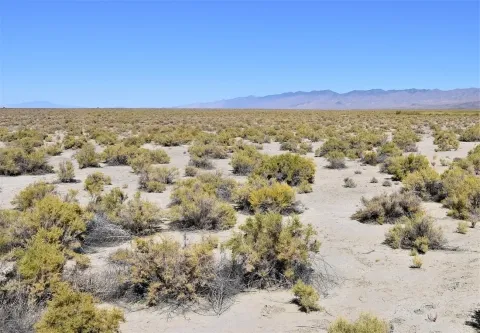 A dry sagebrush landscape stretches into the horizon. Mountains in the background.
A dry sagebrush landscape stretches into the horizon. Mountains in the background.
One of the most remarkable aspects of Nevada’s natural world, contributing to what is Nevada famous for in ecological circles, is its high number of endemic species. Over 300 plant and animal species found in Nevada exist nowhere else on Earth. These unique inhabitants, often tied to specific isolated spring systems or mountain ranges, include fascinating creatures like the Devil’s Hole pupfish or the Dixie Valley toad. These endemic species highlight the importance of conserving Nevada’s diverse and often fragile ecosystems.
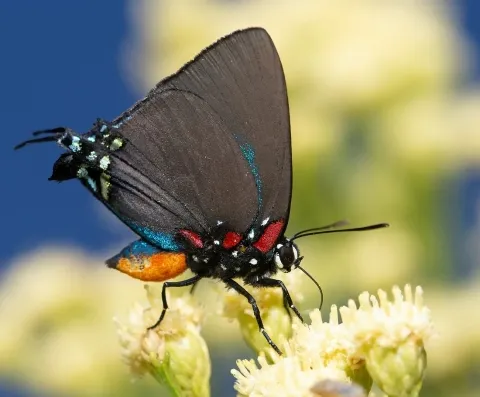 A butterfly with grey wings and an orange, blue, and black body is perched on top of white flowers.
A butterfly with grey wings and an orange, blue, and black body is perched on top of white flowers.
Nevada is also famous for its hot springs, boasting over 300 thermal pools – the most of any state. These natural springs, some developed for soaking and others wild and remote, are geological wonders and vital habitats for many of the state’s endemic aquatic species, including the famous Devil’s Hole pupfish mentioned earlier. Visiting a Nevada hot spring offers a unique blend of relaxation and connection to the earth’s raw power.
 A large male desert bighorn sheep is facing the camera next to a lamb.
A large male desert bighorn sheep is facing the camera next to a lamb.
Echoes of the Past: History and Heritage
To fully understand what is Nevada famous for, one must delve into its compelling history. Known as the “Silver State,” Nevada’s identity is deeply intertwined with the mining booms of the 19th century. The discovery of the Comstock Lode in 1859, one of the richest silver strikes in history, led to a massive influx of people and rapid development, eventually paving the way for statehood in 1864 during the Civil War.
This mining heritage left behind numerous ghost towns scattered across the landscape, offering fascinating glimpses into a bygone era of ambitious prospectors and rugged frontier life. Places like Virginia City, once a bustling mining metropolis, are now living history museums, allowing visitors to step back in time and experience the atmosphere of the Old West.
Another historical landmark that contributes significantly to Nevada’s fame is the Hoover Dam. Built during the Great Depression on the border with Arizona, this engineering marvel tamed the Colorado River, created Lake Mead (one of the largest artificial lakes in the world), and provided water and hydroelectric power to the burgeoning Southwest. It stands as a testament to human ingenuity and perseverance.
Nevada’s history also includes the rich heritage of various Native American tribes, including the Washoe, Paiute, and Shoshone, who inhabited the Great Basin long before the arrival of European settlers. Their history, traditions, and connection to the land are integral parts of the state’s cultural tapestry, though often less highlighted than the mining or casino eras.
A Taste of the Silver State: Culinary Surprises
While Las Vegas is renowned for its high-end celebrity chef restaurants, answering what is Nevada famous for in terms of food requires looking beyond the Strip. Nevada’s culinary landscape reflects its diverse influences – from the upscale dining in its major cities to the hearty, no-nonsense fare found in its more rural areas.
Northern Nevada, particularly around Reno and Winnemucca, has a significant Basque influence due to historical immigration patterns. Traditional Basque restaurants offer large, family-style meals featuring grilled meats, hearty soups, and unique side dishes, a distinct cultural and culinary experience rarely found elsewhere in the U.S.
Across the state, you can find classic American diner food, steakhouses drawing on the state’s ranching traditions, and increasingly, diverse ethnic cuisines reflecting the populations in its urban centers. The explosion of the food scene in Las Vegas isn’t limited to expensive dining; the city also boasts incredible ethnic eateries, food trucks, and casual spots catering to every taste and budget. Exploring Nevada’s food scene offers unexpected delights, connecting you to the state’s history and demographics.
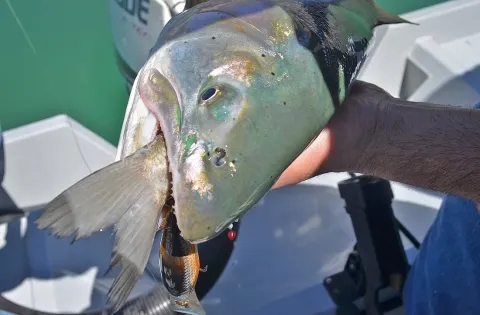 A large trout is pictured outside of the water with another fish in its mouth.
A large trout is pictured outside of the water with another fish in its mouth.
Nevada is also home to the Lahontan cutthroat trout, its state fish, which is the largest inland cutthroat trout species globally. While perhaps not a famous culinary dish for the masses, its existence speaks to the unique aquatic environments found within the state’s arid landscape.
Adventure and Sport: Embracing the Outdoors and Urban Thrills
Nevada’s varied terrain makes it a playground for outdoor enthusiasts, adding another dimension to what is Nevada famous for. The mountains offer hiking, rock climbing, and in areas near Lake Tahoe, skiing and snowboarding. The vast open spaces are perfect for off-roading, camping, and stargazing away from city lights.
Water sports are popular on its lakes, including the vast Lake Mead and the beautiful Lake Tahoe (which Nevada shares with California). Boating, swimming, and fishing are major draws during the warmer months.
Beyond outdoor adventures, Nevada has become increasingly famous for professional sports, particularly in Las Vegas. The city is home to NFL, NHL, WNBA teams, and hosts major boxing matches, UFC events, and motorsports like NASCAR. This influx of professional sports adds a new layer to the state’s identity as an entertainment hub.
Unique Experiences: Events and the Unexpected
Nevada hosts several unique events that contribute to its distinct culture and fame. Perhaps the most globally recognized is Burning Man, an annual event held in the Black Rock Desert where participants create a temporary city dedicated to community, art, self-expression, and self-reliance. This event embodies a counter-cultural spirit and utilizes Nevada’s expansive, empty landscapes as a canvas.
The state also has a reputation, though perhaps less celebrated now, for its historical leniency regarding certain activities, contributing to its “anything goes” image often associated with Las Vegas.
Exploring the less-traveled roads can lead to discovering quirky roadside attractions, vast open ranges where wild mustangs still roam, and small towns with deep local character. These experiences reveal the independent and resilient spirit that defines the state beyond its famous landmarks.
 Pinkish white flowers
Pinkish white flowers
Nevada’s unique flora, including its numerous endemic plant species, are part of the state’s natural heritage and can be appreciated by those who venture into its diverse landscapes. These delicate flowers and resilient plants are as much a part of what is Nevada famous for as its glittering casinos, especially to botanists and nature lovers.
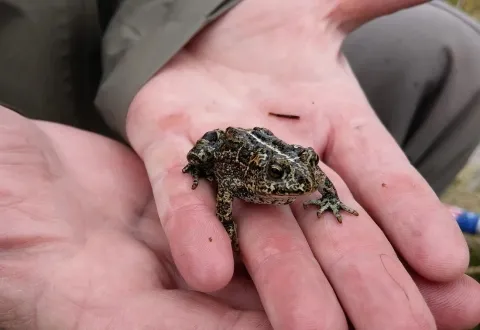 A small toad is held in hand by a biologist
A small toad is held in hand by a biologist
Wildlife, including unique amphibians like the Dixie Valley toad shown here being handled by a biologist, adds to the ecological fame of Nevada. These small, vulnerable creatures highlight the hidden natural wonders often overshadowed by the state’s more famous attractions.
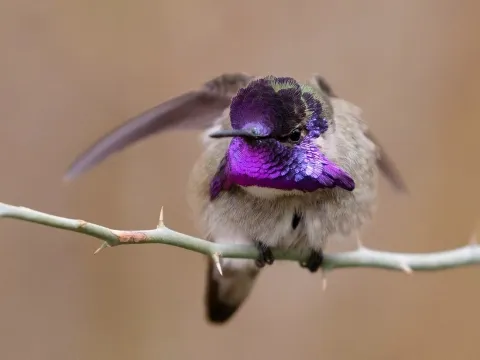 A bird with a grey body and a bright purple face is perched on a branch.
A bird with a grey body and a bright purple face is perched on a branch.
The diversity of birdlife in Nevada, such as this colorful species, further demonstrates the varied habitats available across the state, from wetlands and riparian areas to deserts and mountains, contributing to its fame among birdwatchers and naturalists.
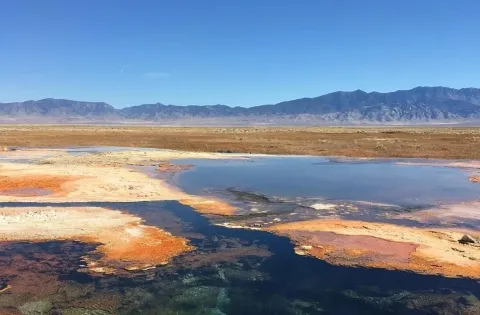 A hot spring is pictured with mountains in the background.
A hot spring is pictured with mountains in the background.
Nevada’s numerous hot springs, set against stunning natural backdrops like mountain ranges, are a significant part of what is Nevada famous for in terms of unique geological features and relaxing natural attractions.
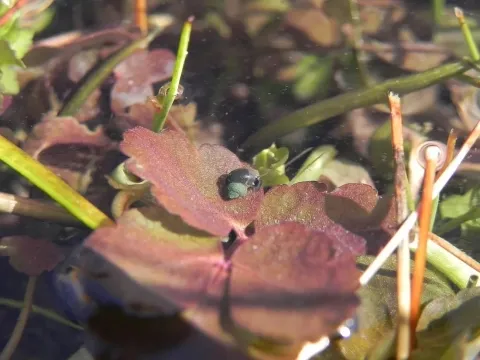 A small snail is underwater on top of red leaves.
A small snail is underwater on top of red leaves.
Even tiny creatures like this springsnail, often found in Nevada’s isolated aquatic systems, contribute to the state’s fame for harboring a high number of endemic and at-risk species, underscoring its ecological importance.
Conclusion: A State of Contrasts
So, what is Nevada famous for? It’s famous for the dazzling, artificial glow of Las Vegas, a global icon of entertainment and excess. But it’s equally famous for its stark, profound natural beauty – its vast mountain ranges, arid deserts, unique biodiversity, and numerous hot springs. It’s famous for a history built on silver booms and engineering marvels like the Hoover Dam. It’s increasingly famous for a burgeoning culinary scene and a growing presence in professional sports. It’s famous for its wide-open spaces that host unique cultural events and offer unparalleled outdoor adventures.
Nevada is a state of fascinating contrasts and extremes. It’s a place where you can gamble all night and hike rugged mountains the next morning, explore historic ghost towns in the afternoon, and soak in a natural hot spring by sunset. To truly answer what is Nevada famous for is to understand that its fame lies not in a single attribute, but in this incredible, sometimes contradictory, blend of human ambition and natural wonder. It invites visitors to look beyond the headlines and discover a state with a rich story and an adventurous spirit.
